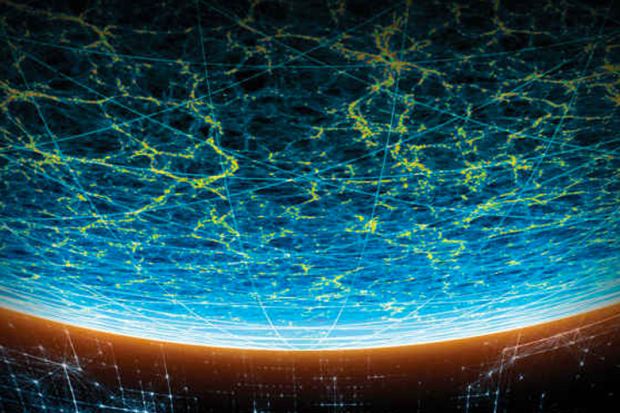Once upon a time, the universe meant the Sun, the Earth and five naked-eye planets. By the start of the 20th century, it had been redefined to mean the Milky Way, a swirling disc of stars to which the Sun belongs. Today, it means the 100 billion or so “galaxies”, including our Milky Way, which are flying apart like pieces of cosmic shrapnel in the aftermath of the Big Bang 13.82 billion years ago.
In Mapping the Heavens, Priyamvada Natarajan describes the radical ideas that, over the past 4,000 years, have revealed the cosmos to us. As the book’s blurb puts it, she “provides a tour of the ‘greatest hits’ of cosmological discoveries”.
All the radical ideas have met with stubborn resistance, from the claim that the Sun, not the Earth, is at the centre of the Solar System to the claim that the Milky Way is just another galaxy; from the assertion that the universe has not existed for ever but was born to the assertion that most of the cosmos is in a mysterious form that gives out no light. The latter discovery, made by Fritz Zwicky in the 1930s and remade by Vera Rubin in the 1970s, is arguably the most radical so far because it seems that everything astronomers have been observing with their telescopes these past 350 years is less than 5 per cent of all there is. In our universe, darkness rules – in the form of invisible “dark matter” and “dark energy” – and, although we know it is there, we have little idea what it is.
Natarajan’s book is extremely well researched from original sources, and I learned many things. Edwin Hubble, the greatest astronomer of the 20th century, never even acknowledged Vesto Slipher, the man who painstakingly measured the galactic “red shifts” in Hubble’s epoch-making 1929 paper that announced the expanding universe. Henrietta Leavitt, who found a way to measure the size of the universe with “Cepheid variables”, would have become only the second woman to win the Nobel Prize for Physics (after Marie Curie, who won two Nobel prizes) had she not been nominated five years after her death.
Having explained how we obtained our current picture of the universe, Natarajan asks: what is left to discover? She first considers our own galaxy. Almost certainly, she believes, we are going to find the telltale signs of a second biology on a planet orbiting another star. Finding someone to talk to, however, will be harder. Not only did life on Earth spend 3 billion years at the single-cell stage – indicating that the step to complex life is a difficult one – but the time span of technological civilisations may be so brief that they are unlikely to overlap with ours.
But, in looking to the future, Natarajan also looks beyond our universe. And here nature appears to be banging us over the head and telling us from several different directions that this is not the only universe. Hold on to your hats. According to Natarajan, the word “universe” may be on the verge of its most radical redefinition yet as cosmology flirts with the idea of an infinity of other universes, and the human race is forced to come to terms with being lost in a cosmos unimaginably vaster than anyone dreamed possible.
Marcus Chown, formerly a radio astronomer at the California Institute of Technology, is author, most recently, of What a Wonderful World: Life, the Universe and Everything in a Nutshell (2014).
Mapping the Heavens: The Radical Scientific Ideas that Reveal the Cosmos
By Priyamvada Natarajan
Yale University Press, 288pp, £16.99
ISBN 9780300204414
Published 7 June 2016
后记
Print headline: They gave us eyes to see forever




